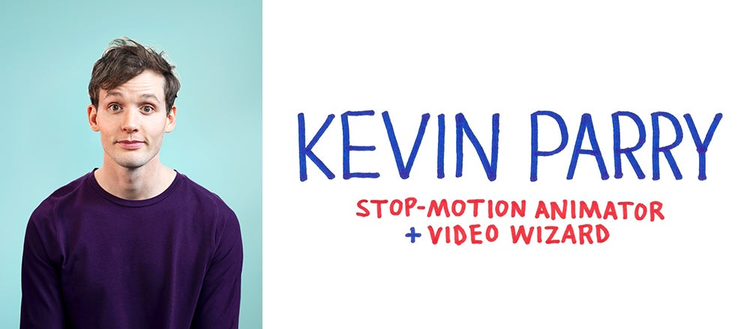How Kevin Parry creates stop-motion animation that will stop you in your tracks

For Kevin Parry, looking back is key to staying ahead.
The professional stop-motion animator and video wizard spends countless hours watching and learning from silent-film era greats such as Charlie Chaplin and Buster Keaton. The irony of this juxtaposition is not lost on him given his recent move to creating highly shareable stop-motion animation and videos for social media platforms including Instagram, TikTok, and YouTube.
“It’s amazing how these guys could make people laugh with so few props, relying largely on their body language and facial expressions,” says Parry. “I draw a lot of inspiration from this period, while experimenting with new and different techniques.”
It’s this innovation that has helped define Parry’s decade-long career. After graduating with a degree in animation from Toronto’s Sheridan College, he took on some freelance projects before landing a coveted role as an animator at LAIKA. There, he had an opportunity to develop and hone his skills, working on Oscar-nominated films such as Missing Link, Kubo and the Two Strings, and The Boxtrolls.
“I went from being afraid to animate a tiny object to working on an ensemble of characters, frame by frame, at once,” he says. “Each progression was intimidating, but it was a great opportunity to advance my skills.”
After five successful years at LAIKA, Parry decided to return to Toronto and strike out on his own, landing brands such as Listerine, Malibu Rum, and Lifeprint as clients. He’s also amassed a significant social following on Instagram and YouTube, where he runs monthly tutorials for other creatives.
Tried-and-true animation techniques – for the digital age
With most of his work on display across digital platforms, it may come as a surprise that Parry falls back on his traditional, hand-drawn animation techniques to create his videos. That’s because it’s all about knowing exactly where people are looking, keeping their attention, and, of course, being able to make an object look like something else through movement.
“None of the tricks I do now have 3D elements or anything that’s computer-generated,” says Parry. “If I need an object to float around in a grid, I’ll just put it on a fishing line and move it around myself. It’s more convincing that way because real objects move imperfectly.”
That’s where the manual processes end and the digital workflow takes over. He begins by uploading his shots to Adobe After Effects. From there, he does his masking and animated layering work – which can result in hundreds of unnamed layers. He automates as much as he can using the Roto Brush and Mocha tools in After Effects, speeding up the once-manual process of moving masked points around in hundreds of frames, one by one.
“I never really start out with a plan, so it can get pretty messy,” says Parry. “The fact that I can just click ‘go’ in After Effects frees me up to try new things. I just add layers upon layers until I end up with something that works.”
Parry then exports a dummy file to Adobe Premiere Pro so he can work on the audio portion. Once that’s done, he adds the audio file to After Effects and exports the completed video.
A master in the making, from an early age
All of this is a far cry from Parry’s early artwork as a child, when he’d take a physical picture of himself, scan it, and experiment with new techniques – just like the way newspapers were once assembled. His goal was never perfection, but progress, and it’s how he continues to evolve his work today.
“You could sit and learn a million things and try to make one perfect video, or you can just make 100 things and get better as you go along,” he says. “With each piece I create, I find one little thing that I’d like to improve on.”
Next on his list of skills to master are color corrections and audio – the latter in particular because of the animation tutorials he records for YouTube. And instead of creating shorter videos for every platform, Parry has his sights set on bigger, more narrative-driven projects – like the themed approach his work has taken on this year.
“I prefer to take an object and consider a different way to look at it or use it. It’s much easier to create from that point of view, rather than sitting around trying to think of a viral idea,” says Parry.
“And frankly,” he continues, “I just find comfort in knowing that I created something really good, instead of trying to keep up with everyone else.”
Watch the Tips & Tricks Tuesday interview with Kevin Parry and get access to host Valentina Vee’s tutorial guide.